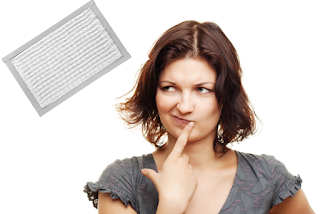Wondering how to improve indoor air quality? Ensuring carbon monoxide safety is a wise first step. January is the deadliest month for carbon monoxide poisoning, the leading cause of poisoning deaths nationwide. Luckily, poisoning by this colorless, odorless gas can be easily prevented with a few simple safety measures.
Team-Up with Your Family & Guard Against Carbon Monoxide (CO) Poisoning
 Complete this safety checklist and protect your family from carbon monoxide dangers.
Complete this safety checklist and protect your family from carbon monoxide dangers.- Know Carbon Monoxide Sources
Any equipment that burns gas, oil, charcoal, wood, natural gas or propane can cause CO poisoning:- Furnaces
- Fireplaces
- Grills
- Cooktops/Ranges
- Water heaters
- Generators
- Lawnmowers & power tools
- Cars
- Any appliance with a pilot light.
- Familiarize Your Family with the Signs of CO Poisoning
- Dizziness
- Headache
- Nausea/Vomiting
- Shortness of breath
- Mental confusion
- Loss of coordination
- Loss of consciousness
- Organ damage
- Death
- Know What to Do in a Carbon Monoxide Emergency
- ImmediateLY leave the home.
- Meet in a pre-planned outdoor location with clean, fresh air.
- Contact the fire department once all family members are accounted for.
- Do not re-enter the home until a pro has inspected it, aired it out, and determined it’s safe.
- Install CO Detectors
Be sure to properly install CO detectors, placing one on each level of your home, and one beside each sleeping area. Locate in an open/accessible area (no corners) on a ceiling/wall, away from drapes/furniture. If you’re unsure where to locate detectors, your local heating repair company can help you. - Replace Detector Batteries Regularly
Twice-per-year is best, once before prime heating season. - Test Regularly
Test at least twice-per-month, cleaning them gently with a vacuum brush or compressed air when needed. - Replace Detectors Before they Expire
Detectors expire and should be replaced every 7-years, at a minimum, to ensure you and your family are protected with the latest in fully-functional CO safety technology. - Keep a Watchful Eye on Venting
It is not uncommon for emergency HVAC service technicians to encounter combustion appliance venting that has been blocked by bird nests, animal debris, snow and ice, which can prevent the proper flow of exhaust, causing carbon monoxide buildup in your home. - Ensure Chimneys & Flues are Professionally Cleaned & Inspected Annually
Blocked chimneys/flues are a common cause of CO buildup. - Don’t Neglect Combustion Appliance Care
Be sure to schedule heating repair services annually to ensure your heater/furnace is operating correctly and properly vented.
Never Forget These Carbon Monoxide ‘DON’T’S
- Do NOT leave a car running in an attached garage/carport.
- Do NOT rely on ovens/stoves to stay warm.
- Do NOT operate a generator or grill indoors.
- Do NOT operate generators/grills near windows/doors where fumes could leak into your home.
- Do NOT block water heater, dryer, or oven range ductwork.
Keep your family safe through the winter heating season. Stay on top of the routine inspection and maintenance needs of combustion appliances with the help of a friendly H&H Heating & Air Conditioning professional today.
This blog was originally posted on https://www.delcohvac.com/for-month-of-january-carbon-monoxide-poisoning-safety-checklist/





